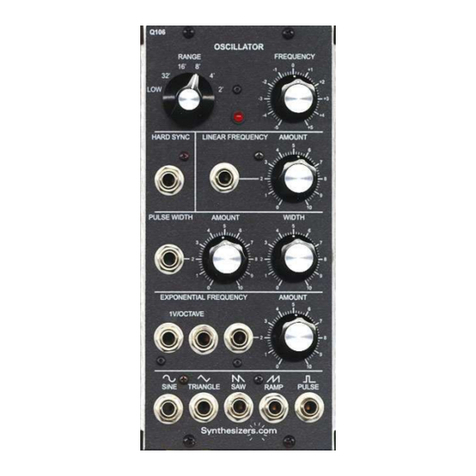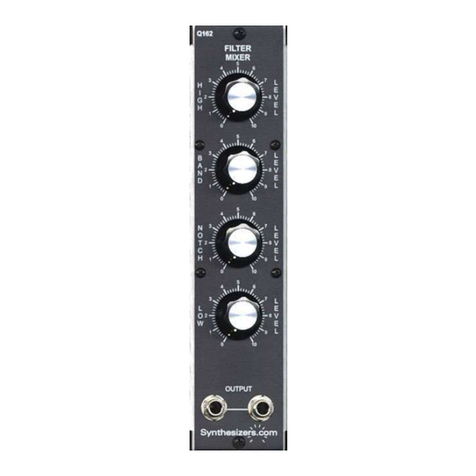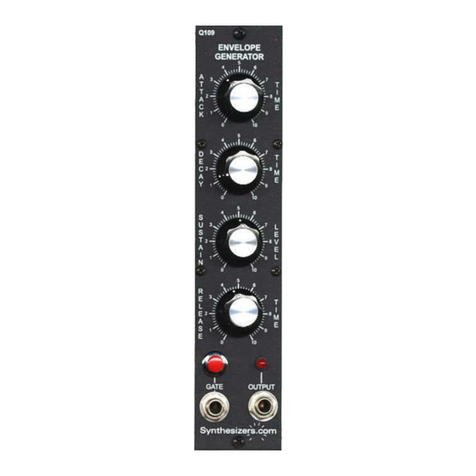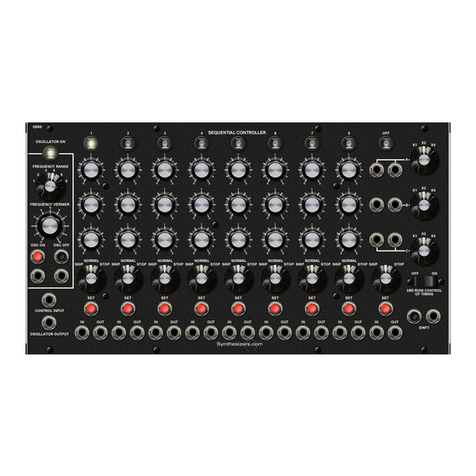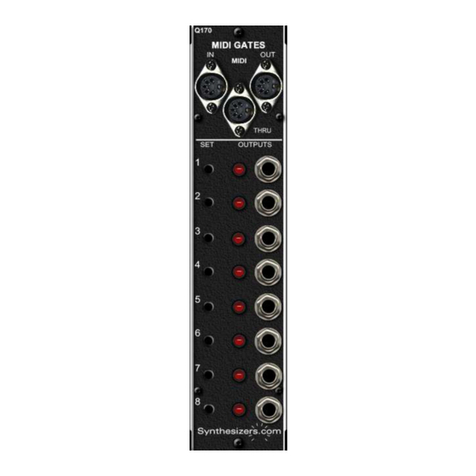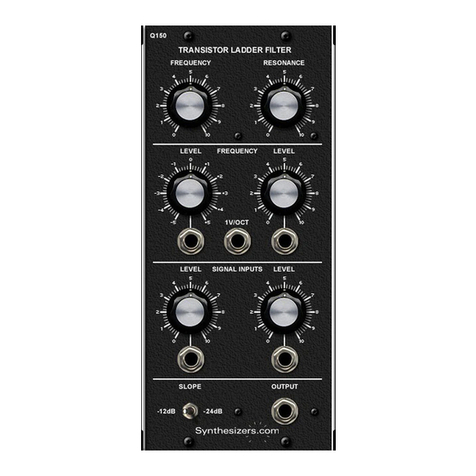
Q119 Sequential Controller
Aug 2014
Controls and Connectors continued...
Cycle Switch
Causes the sequencer to cycle once or continuously. Receiving a ‘Go’ or ‘Start’ signal will restart the se-
quence at stage 1.
Sequence Switch
Choose between an up only sequence: 1,2,3… , or up/down 1,2,3….3,2,1.
Oscillator Source Switch
Selects the internal oscillator or external oscillator. Use an external oscillator to cycle at frequencies not
obtainable with the internal oscillator, to synchronize several sequential controllers, or to control each
stage’s on time.
External Oscillator Connector
Apply an external oscillator here. Use a pulse waveform when possible. 0/+5 volt or –5/+5 volts ok. The
width of the pulse waveform will control the width of the gate outputs. The incoming oscillator pulses
should be synchronized with the starting of the sequencer to prevent the first stage time from being short.
Oscillator Rate Control
Controls the speed of the internal oscillator.
Oscillator Range Switch
Sets the oscillator range from approximately 2hz-20hz in the low position, to 20hz to 200hz in the high
position.
Manual Step Button
Allows manual stepping of the sequencer. Helpful when setting voltages.
Gate Width Control
Adjusts the gate width from approximately 10% to 90%. This affects all gate outputs.
Go Button / Connector
This is a level-sensitive signal used to control the on/off status of the sequencer. Pressing and holding
this button or applying a signal will cause the sequence to begin (assuming other controls are set cor-
rectly), and releasing it will stop the sequence. For example, to have the sequencer run only when a key
is pressed on the keyboard, apply the gate signal to the ‘Go’ connector. The threshold of this signal is
approximately 1.5 volts. When in 'Continue Mode' (must be selected), pressing 'Go', will cause the se-
quence to continue where it left off. When in 'Reset Mode' (the default mode), pressing 'Go', will cause
the sequence to reset to stage 1.
Start Button / Connector
This is a rising edge-sensitive signal used to start the sequencer. Pressing this button (holding it is not
necessary) or applying a signal will cause the sequence to begin (assuming other controls are set cor-
rectly). For example, to have the sequencer begin when a key is pressed on the keyboard, apply the gate
signal to the start connector. The threshold of this signal is approximately 1.5 volts. When in 'Continue
Mode' (must be selected), pressing 'Start', will cause the sequence to continue where it left off. When in
'Reset Mode' (the default mode), pressing 'Start', will cause the sequence to reset to stage 1.
